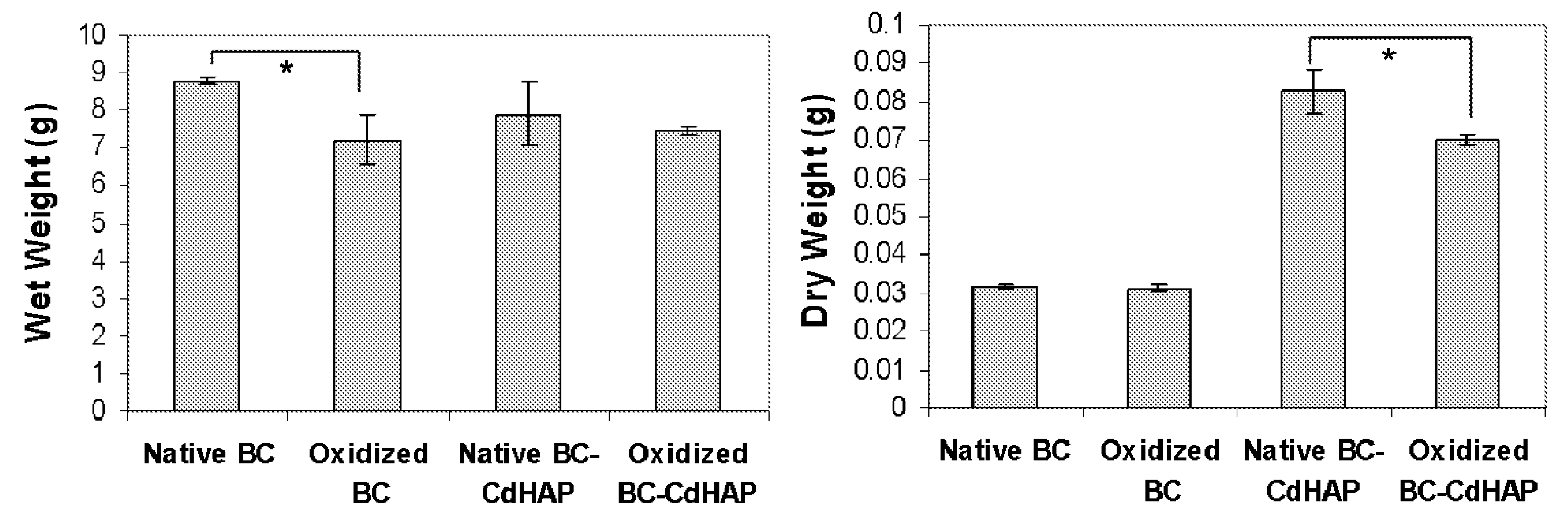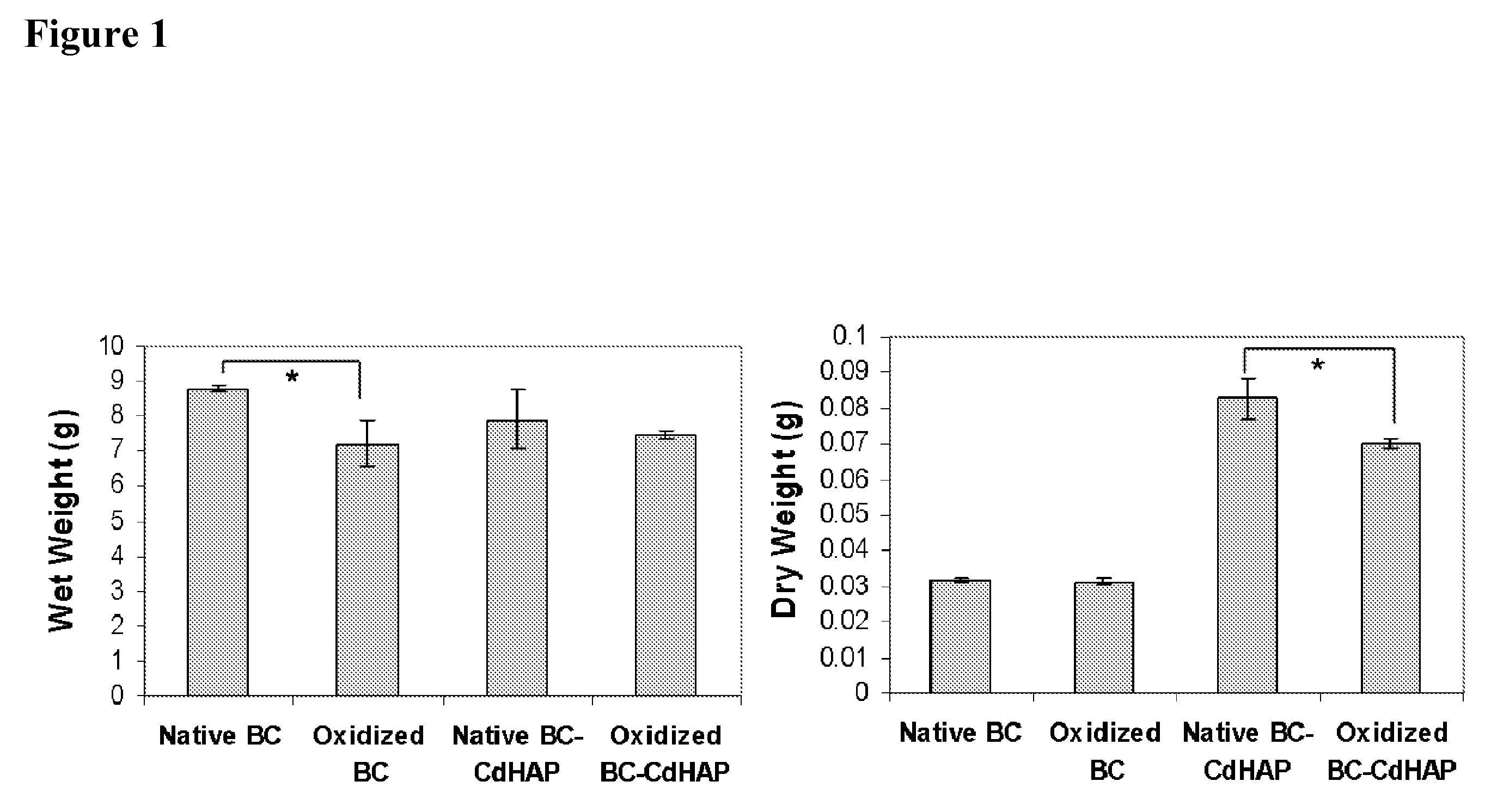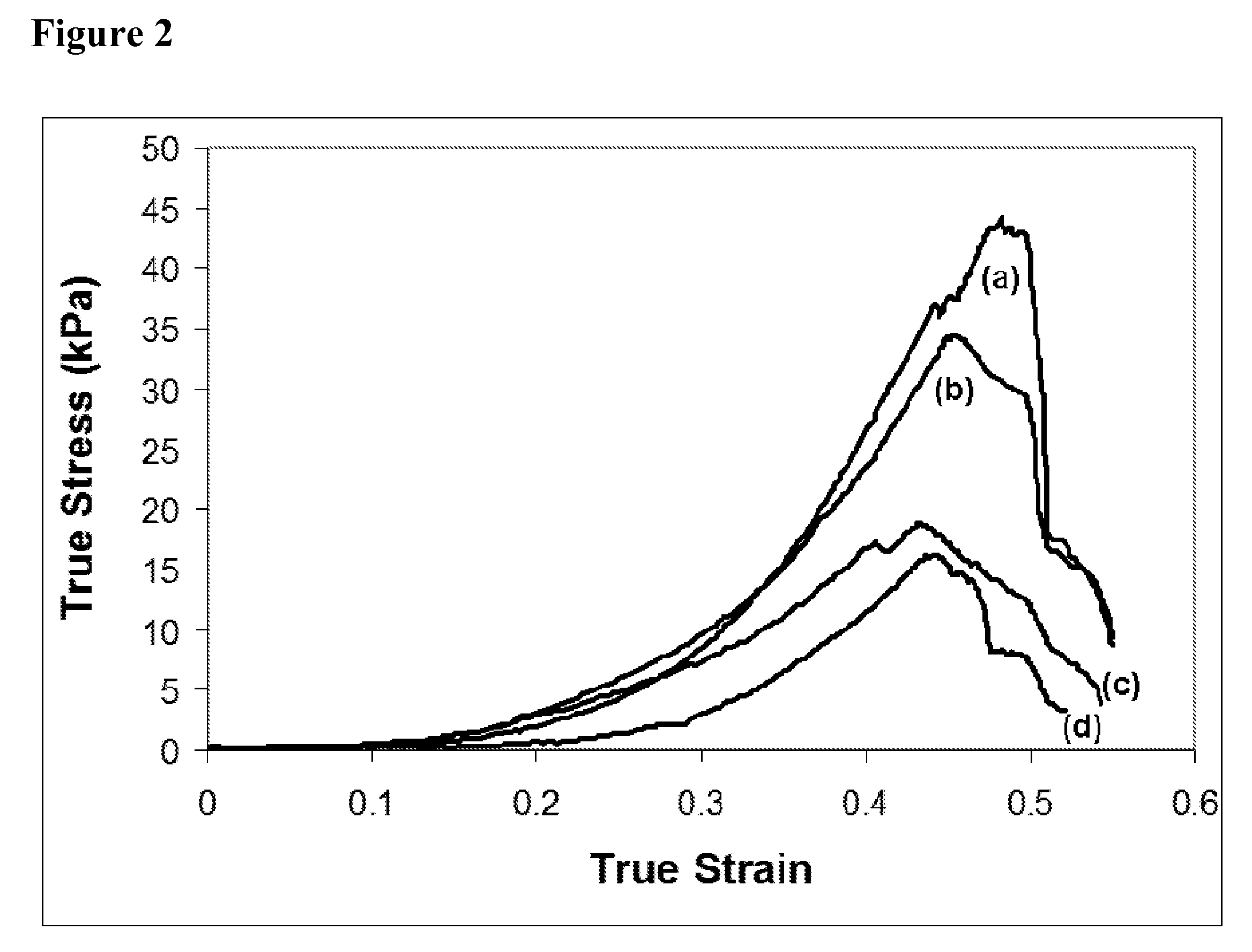Bioresorbable Calcium-Deficient Hydroxyapatite Hydrogel Composite
a technology of hydroxyapatite hydrogel and bioresorbable calcium, which is applied in the field of biomaterials, can solve the problems of large surface area, cellulose loss, and inability to absorb cellulose from these other polymers,
- Summary
- Abstract
- Description
- Claims
- Application Information
AI Technical Summary
Problems solved by technology
Method used
Image
Examples
example 1
Materials and Methods
[0073]Synthesis of bacterial cellulose. The bacterial strain Gluconacetobacter hansenii was obtained from American Type Culture Collection (Manassas, Va., U.S.A.) (ATCC 10821). Cellulose was synthesized by an optimized modification (Hutchens et al., Lett. Appl. Microbiol., 2007, 44:175-180) of the method of Schramm and Hestrin (J. Gen. Microbiol., 1954, 11: 123-129). The pellicle discs of cellulose (6 cm diameter, ˜3 mm thickness) synthesized by the bacteria, were harvested following culture for thirty days and purified.
[0074]Bacterial cellulose oxidation. Twenty-two cellulose pellicles were placed in a capped vessel containing 145 ml of 50 mM NaIO4 in 5% n-propanol. The vessel was covered in aluminum foil and placed on an orbital shaker for 24 h at 23° C. The reaction was stopped by placing the vessel in an ice bath and adding 0.5 ml of glycerol to consume the excess periodate. The cellulose was then purified with several changes of distilled / deionized water. T...
example 2
Characterization of Native and Oxidized Bacterial Cellulose Calcium-Deficient Hydroxyapatite Composites
[0085]The wet weight of the oxidized cellulose samples was significantly less than the native cellulose samples (FIG. 1a), although the dry weights were not significantly different (FIG. 1b). Thus, during periodate oxidation, a change in the cellulose network structure occurs which decreases its capacity to retain water.
[0086]A homogenous white precipitate immediately formed throughout the bacterial cellulose (BC) matrix when it was placed in a phosphate solution after incubation in aqueous calcium chloride. After drying and weighing the samples, it was observed that more calcium-deficient hydroxyapatite (CdHAP) formed in the native BC compared to the oxidized BC (FIG. 1b) (62% CdHAP in native composite vs. 55% CdHAP in oxidized composite). The true stress-strain curves of the hydrated samples are shown in FIG. 2. The ultimate tensile strength and elastic modulus values of the samp...
example 3
Degradation of Oxidized Bacterial Cellulose
[0093]The dry weights of the samples before and after the in-vitro degradation period are given in FIG. 7. Statistical analysis showed that oxidized BC lost significant mass after static and dynamic incubation in the HEPES buffer at 37° C. (an average decrease of 38% and 36% respectively). However, the oxidized BC weight losses after static and dynamic incubation were not significantly different. This shows that degradation of periodate oxidized bacterial cellulose is not attributed to physical disruption, but is a result of hydrolysis in an aqueous environment at physiological pH. Oxidized BC-CdHAP lost significant weight after dynamic incubation in the HEPES buffer at 37° C., losing 23% of its mass on average. Mechanical disruption therefore did affect the mass loss of the oxidized BC-CdHAP composite. The chemical bonding between the oxidized BC and CdHAP may not be as strong as that between the native BC and CdHAP, causing some of the Cd...
PUM
| Property | Measurement | Unit |
|---|---|---|
| Biodegradability | aaaaa | aaaaa |
| Degradation properties | aaaaa | aaaaa |
| Bioabsorbable | aaaaa | aaaaa |
Abstract
Description
Claims
Application Information
 Login to View More
Login to View More - R&D
- Intellectual Property
- Life Sciences
- Materials
- Tech Scout
- Unparalleled Data Quality
- Higher Quality Content
- 60% Fewer Hallucinations
Browse by: Latest US Patents, China's latest patents, Technical Efficacy Thesaurus, Application Domain, Technology Topic, Popular Technical Reports.
© 2025 PatSnap. All rights reserved.Legal|Privacy policy|Modern Slavery Act Transparency Statement|Sitemap|About US| Contact US: help@patsnap.com



